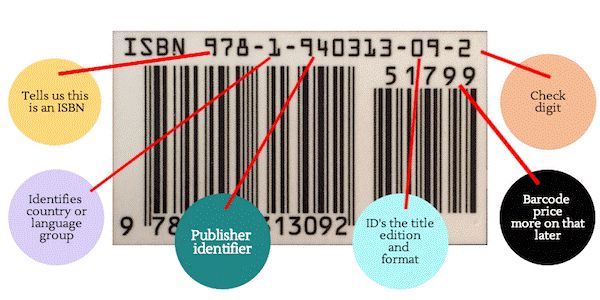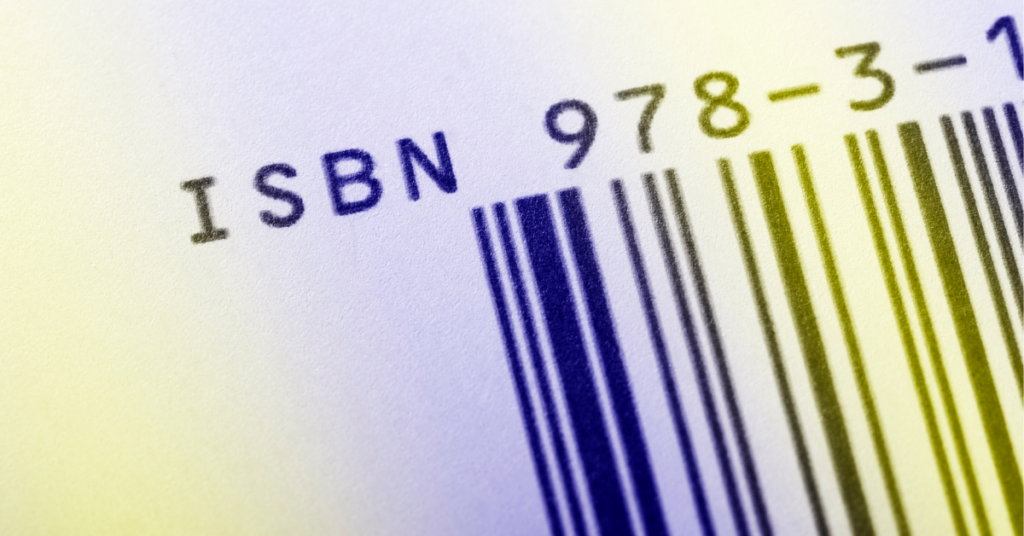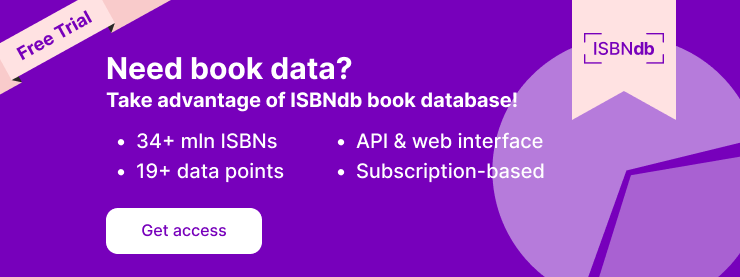
Voracious readers know that every book has one thing in common. No matter what genre, length, publisher, or art that adorns its cover, every book has an ISBN. That is, provided it was printed after 1970.
You’ve likely noticed a barcode with a serial number on the back of the book you’re reading. It’s easy to think that this is just for the cashier at your local bookstore to swipe, but it’s so much more than that—it’s an ISBN!
What is an ISBN?
An International Standard Book Number, or ISBN, is a unique, 10 to 13-digit number, used to identify a book. The ISBN system is used internationally, making it easy for libraries and bookstores across the world to find and classify books. The ISBN system isn’t used exclusively for books, though, as they have been used for CDs and even sheet music.
However, recurring publications, such as magazines, use a different system, the International Standard Serial Number or ISSN.
Though every ISBN is unique, the digits are all sorted in the same way, containing five separate categories in this order:
- The first category is the Prefix, which is the first three digits of an ISBN. The prefix will always be either 978 or 979.
- Registration Group is the second category, which are the digits following the prefix. The registration group ranges from one to five digits long—depending on the content—and is used to clarify the country of origin and language.
- The Registrant section is similarly flexible, as it can range up to seven digits in length. These digits denote the publisher of the book.
- The fourth category is the Publication section, which specifies the edition of the book and can be up to six digits.
- The Check Digit is the final digit of an ISBN, a single number that is intended to mathematically validate the previous digits in an ISBN.
ISBNs are used by libraries, bookstores, and regular readers alike, as they allow you to search any book within the ISBN system. Instead of searching by title alone, an ISBN can help you find specific editions or printings of a book, making it a valuable tool for those who deal with rare books or expensive editions.
The History of the ISBN
Before the ISBN, books were difficult to classify. Typically, readers would have to find the books they were looking for by title alone, turning to the information page to see if it was the correct edition. Libraries used card catalogs to sort their books, writing information on the cards that denoted whether a book was turned in. This was all done by hand, resulting in a number of fiascos due to user error (read more about book identification in pre-ISBN era).
Fortunately, this changed in 1965.
That year, British book retailer W. H. Smith shocked the world when it announced that it would be moving from a written system to a computerized warehouse, slated to be complete in 1967. In the infancy of computer technology, the retailer hired a number of consultants from groups like the British Publishers Association’s Distribution and Methods Committee to devise a standard, mathematical number system to sort and identify all of the books carried by W. H. Smith. In 1966, they created the Standard Book Numbering (SBN) system, a precursor to the ISBN, and were able to implement it in 1967, just as expected.
The world had taken notice of W. H. Smith’s new system, piquing the interest of the International Organization for Standardization (ISO). The ISO realized that the British SBN system could be applied internationally, standardizing the way we sort books.
In 1968, a meeting was held in London, featuring ISO representatives from all over the world. Many countries that could not send representatives mailed in their own letters of interest, showing that the whole globe saw the benefit in adopting the British SBN system. These representatives spoke at length about the system, proposing changes and new additions over the next two years.
In 1970, their ideas were consolidated, and “ISO 2108” was approved by the International Organization for Standardization, marking the official adoption of the ISBN system.
The International Standard Serial Number (ISSN) was developed shortly after, which came as a necessity due to the constant changes in serial publications.
The Evolution of the ISBN
Surprisingly, the ISBN system has not changed much since its inception, a testament to the hard work of the International Organization for Standardization.
However, the ISBN has had one major evolution, which happened less than twenty years ago. For nearly forty years, ISBNs contained only ten digits. However, new books and updated editions were published at such a rapid rate that unique ISBN numbers were dwindling. In 2007, the ISBN adopted three new digits, known as the prefix. This allowed new ISBN numbers to be created, using a 978 prefix to ensure that every number is unique.
In 2019, the ISBN system ran into this problem yet again, solving the issue the same way it had been done in 2007—by updating the prefix. This is why ISBN prefixes are either 978 or 979, depending on the year of release.
It’s likely that the prefix will need to be updated again (if it follows the previous pattern, we’re guessing it will be 980), but this small change is a positive sign for readers. When the ISBN prefix is updated, you know that the world of books is alive and well!







